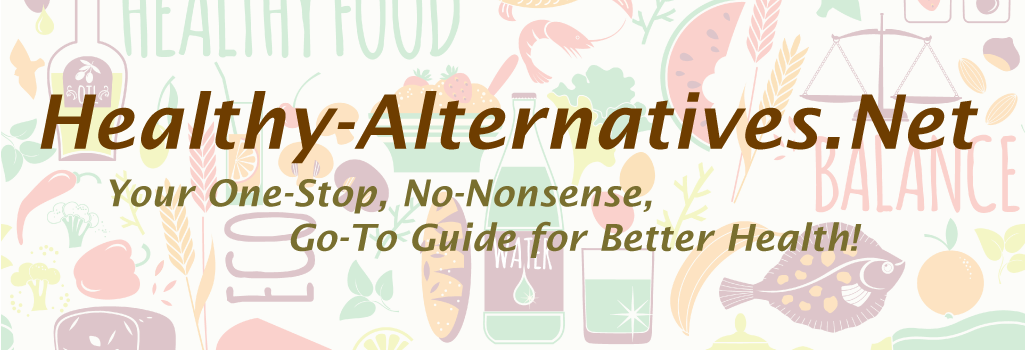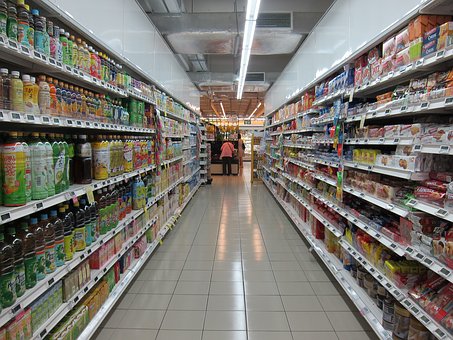Nutrition Table
Here’s an explanation to help you decipher the NUTRITION TABLE found on all packaged food. Take note of the Serving Size first to establish all other measurements. It’s divided into Macronutrients: Fats/Carbs/Proteins and also lists some major Micronutrients: Sodium/Calcium/Iron/Vitamin C & A
CALORIES
This indicates how much energy is being provided by the food you eat. You need energy for physical acivity and all metabolic processes. Only fat, carbohydrates, alcohol and protein can provide calories. 0 calories = less than 5 calories per serving
- Fat provides 9 calories per gram
- Carbohydrates provide 4 calories per gram
- Alochol provides 7 calories per gram
- Protein provides 4 calories per gram
FAT
Our cell membranes are mostly made up of fat and the brain is 60% fat. Healthy fats should make up 25% – 30% of your daily calories. Percentages on labels are based on a 2,000 calorie per day diet.
- Saturated Fats: Your body manufactures its own required amounts of saturated fats to be used for fuel. So any excess saturated fat you ingest ends up stored in your fat cells. The highest amounts of unhealthy saturated fats are found in grain-fed beef and dairy products and are the primary source of cholesterol. However, coconut and red palm oil also provide vital health benefits and don’t create cancerous toxins when heated. Also, they do not contain cholesterol:
- Coconut Oil is antimicrobial, contains 65% medium chain fats that create better energy usage & less fat storage, and is stable for cooking at high heat.
- Red Palm Oil is a great source of Vitamins A & E that is readily available for use by our cell membranes. Alternately, you would have to consume your vegetables containing these vitamins with a healthy fat for your body to absorb them. This oil also keeps its nutrients when heated.
- Unsaturated Fats: these comprise monounsaturated and polyunsaturated fats:
- Monounsaturated fats are antioxidant and protect you from cardiovascular disease & diabetes
- Polyunsaturated fats are essential because the body can only get these from your diet. These fats help distribute nutrients throughout the body, detoxify the system, regulate insulin and lubricate joints.
- Omega 3 (alpha-linolenic acid): helps prevent and treat coronary artery disease, hypertension, arthritis and other inflammatory and auto-immune disorders. We don’t get enough Omega 3 so choose foods containing high values.
- Omega 6 (linoleic acid): manufacturer’s processes for making packaged foods have created a situation where we now consume way too much Omega 6, which is an underlying cause of chronic inflammation. Try to limit your intake.
*Unfortunately, most labels don’t specify or break down the unsaturated fat content, although items that are a great source of Omega 3 will usually indicate this on the label. Read about the “Omega Dilemma”. To figure out the amount of unsaturated fats when not listed, calculate total fat; Ex: 10g minus (saturated + trans = 2g) = 8g of healthy unsaturated fat.
- Trans Fats: these are artificially altered to provide a longer shelf life and typically found in most standard fried foods and bakery products. These “frankenstein” fats end up in your fat cells and wreak havoc in your system because your body doesn’t know how do deal with them. Avoid as much as possible!
If the table indicates a value for Saturated fat, it may also list a value for cholesterol.
CHOLESTEROL
70-75% is manufactured by the cells in your liver while the rest comes from food. It’s an important component of cell walls and essential for the production of certain hormones. Your body makes all the cholesterol it needs. Those who follow plant-based diets don’t consume cholesterol.
- HDL (high-density lipoprotein): “Good cholesterol” brings the bad cholesterol back to the liver for processing to be expelled in the bile. A person’s HDL level is mostly genetic but negatively impacted by the consumption of saturated and trans fats in the diet.
- LDL (low-density lipoprotein): “Bad cholesterol” sticks to artery walls eventually causing blockages. Levels increase with consumption of saturated and trans fats.
- Triglycerides: these chemical compounds store fatty acids which are an essential source of energy for the body. But, these blood fats rise with alcohol intake, excess weight, high sugar & fat diet and lack of exercise. Excess levels lead to heart disease, stroke, high blood pressure and diabetes.
- Any cholesterol you consume will be the “bad” kind. Try to limit your intake.
SODIUM
Although this is an essential nutrient for every cell in your body, the excessive quantities of sodium in all packaged goods and fast foods cause us to over-consume beyond the daily limit of 2,400mg = 1 tsp per day. This will lead to high blood pressure, bloating and water retention. Ideally, the maximum daily consumption should be less than 2,300mg per day. So, look for low sodium options.
CARBOHYDRATES
This is the brain’s main source of energy but the body can only use so much as immediate fuel, so unused carbs get stored in the liver & muscles and excess carbs end up in your fat cells. Complex carbs break down slowly while simple carbs break down fast, causing sugar spikes followed by feelings of sluggishness. The listed value is the total of complex carbs + starch + fibre + sugar and is based on a 2,000 calorie per day diet. Starch is also an important fuel source but is not listed on the table. To determine starch content, calculate total carbs; Ex: 10g minus (fibre + sugar = 8g) = 2g starch. Try to choose foods with high fibre and low sugar.
- Fibre: not only does soluble fibre absorb excess cholesterol but also slows the release of glucose in the bloodstream to reduce your insulin response. Insoluble fibre keeps foods moving through the digestive system. “High fibre” means at least 4g of fibre per serving. Choose foods with less than 10g of carbs for each gram of fibre. Excess carbs indicates over-processing which destroys nutritional value. Try to consume at least 25g per day.
- Sugar: your bloodstream normally contains 1 tsp of sugar at any given time. Anything more causes insulin to be secreted to remove the excess from the blood. 4g sugar = 1 tsp so divide sugar total by 4 to understand how many teaspoons it comes to and choose foods with less than 10g per serving.
PROTEIN
This contains amino acids required by the body to rebuild almost 300 billion new cells per day. Protein is the most plentiful substance in the body after water. It builds fat-burning muscle, provides energy, elevates your metabolic rate and increases your body’s ability to burn calories as heat. BUT, if you read the page on “Cancer”, you know that animal protein feeds cancerous cells. So choose plant-based protein to stay/get healthy. “High protein” means at least 9g of protein per serving. Protein should supply 30% of your daily calories so multiply protein by 4 to calculate this percentage; Ex: for 10g of protein and 100 calories per serving: 10 x 4 = 40 so 40 out of 100 calories comes from protein.
VITAMINS/MINERALS
Percentages are based on governments’ daily recommendations. If it contains more that 15% of the daily recommended intake, it is considered “a good source of” that nutrient.
- Vitamins A & C plus Calcium & Iron are the only vitamins & minerals required to be listed. This does not mean that there are no other nutrients contained in the food item so any others that get listed are there at the manufacturer’s discretion.
*Choose high A, C, Calcium & Iron content
INGREDIENTS
These are always listed by order of weight, so the first item on the list has the most content – this is very revealing! A long list with strange-sounding ingredients is also a red flag. Look for products with a short list of ingredients that you recognize.
AVOID products containing the following ingredients:
- Aspartame (in Equal, Nutrasweet and all chewing gum) as this contains phenylalanine which is a neurotoxin
- BHA & BHT are carcinogens
- Colouring, Flavouring, Preservatives & MSG AKA Hydrolized Vegetable Protein, Autolized or Hydrolized Yeast Extract
- High Saturated & Trans Fats, Cholesterol, Sodium & Sugar
- Nitrites (lengthens the shelf-life of meat)
- Partially Hydrolized Oil (which clogs arteries)


